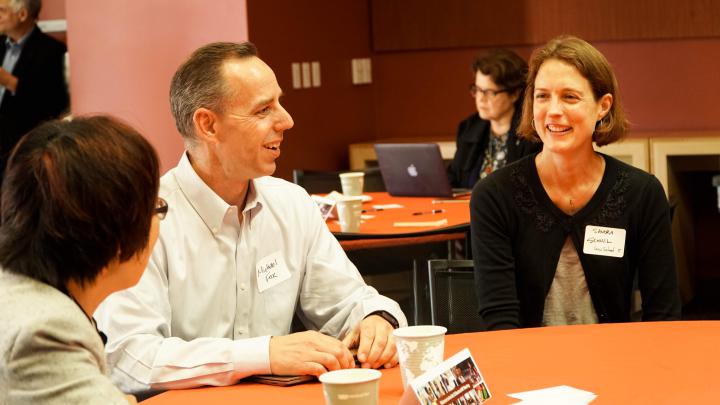Allyship. The word often comes up in discussions around diversity and inclusion, but what does it really mean to be an ally?
According to Valerie Auroria, principal consultant at Frame Shift Consulting, being an ally is actually not an identity, but rather an action or series of actions taken to create welcoming, inclusive, and diverse cultures.
To illustrate this point, let’s take an example. You might be aware of the Stanford Women in Technology (Stanford WIT) affinity group that launched last fall as part of the IDEAL IT program. For women and non-binary people who represent a marginalized group in the fields of IT and technology, Stanford WIT offers valuable group support and a steady stream of resources, training opportunities, and information.
But if you do not identify as a woman or a non-binary person, or otherwise think you are not directly affected by gender inequality in the technology field, you can still be involved as an ally and support work being done to close the gender gap.
An ally to Stanford WIT could be someone who is educating themselves about gender issues in the workplace and working to better understand their own privilege.
They might take some of the following actions:
- Attend Stanford WIT meetings to gain better understanding of the issues facing women and non-binary people in technology.
- Actively object to conversation, stories, or jokes that slander women or non-binary people.
- Vote in ways that aim to increase gender equality.
- Give credit to, and amplify the ideas and voices of women and non-binary coworkers.
- Apologize for mistakes.
- Educate themselves about their own biases and be willing to share any biases they might uncover.
- Challenge their own or others’ assumptions about women and non-binary people who work in in technology.
- Look for micro-inequalities (instances when people are treated differently in small ways).
- Find ways to get involved with creating more diversity in hiring, promoting equal pay, and advocating for women and non-binary coworkers’ career advancement.
- Become a mentor for women or non-binary coworkers and/or provide exposure to internships, job rotations, and new job opportunities.
These actions, provided by the Stanford WIT Training Committee, are just some examples to get started. In reality, there are endless possibilities when it comes to actions an ally can take to support marginalized groups. The first step is becoming aware about issues and biases that may or may not directly affect you.
For Michael Tran Duff, assistant vice president and chief information security officer in University IT, Stanford WIT is an opportunity to learn from and support his colleagues.
“Gaining a deeper understanding of others and a greater awareness of ourselves is essential to cultivating the IDEAL culture that we want for all at Stanford,” he said. “At every WIT event, I find valuable pearls of wisdom and do my best to apply them each day.”
Allyship is key to inclusion
When it comes to diversity and inclusion, one of the most resonant statements today is “diversity is being invited to the dance and inclusion is being asked to dance.”
This means that if you do not intentionally and proactively include everyone, you will unintentionally exclude some. Having a diverse group of people isn’t helpful if those people are not seen as equally capable as their peers, treated differently, and not offered the same opportunities.
By taking concrete actions as allies, we can all help ensure that there is not only diversity in our IT Community at Stanford, but inclusion as well.
“When it comes to inclusion,” said Christa Doane, Stanford WIT Training Committee chair, “we can all lead from our sphere of influence and power, and actively look for ways to leverage our influence to bring people in.”
Learn more
If you would like to learn more about allyship, promoting diversity, embracing inclusion, and reducing bias in the workplace, check out these resources:
Stanford Resources
- Unconscious Bias in Recruiting (STARS course - requires SUNet ID)
- Creating a Team Culture of Diversity, Equity, and Inclusion (STARS course - requires SUNet ID)
- The Clayman Institute: Moving Beyond Bias in the Workplace (article)
- VMWare: Women’s Leadership Innovation Lab: See Bias/Block Bias Tools (toolkit)
Other resources
- Frame Shift Consulting: Identifying Your Power and Privilege (assessment)
- Frame Shift Consulting: Focus on Allies (video)
- Bias Interrupters (toolkit)
- Unconscious Bias (LinkedIn Learning course)
- Workplace Inclusion (article)


